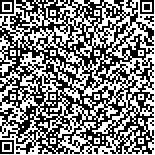| 摘要: |
| 筛析法是硬件要求低、操作简便、应用广泛的一种碎屑沉积物粒度分析方法。对于砂砾质沉积物而言, 在具体的粒度分析实验中, 应该取用多少质量的样品进行筛析, 目前尚缺乏完备的、科学内涵明确的技术规范。《海洋调查规范第8部分: 海洋地质地球物理调查》对此问题给出了部分解决方案, 但其原理不明, 也未能包括砂砾质沉积物的主要粒径范围。本研究针对筛析法取样质量的估算问题展开分析与讨论, 基于概率分布理论推导出一套适用于砂砾质样品的筛析法取样质量估算公式, 给出了不同分选系数下(0.35 Φ~4.00 Φ)样品最大颗粒直径对应的理论取样最小量的范围。研究表明, 现行海洋调查规范的最大颗粒直径与取样最小量之间的定量关系可能是基于正态分布、分选极差的下界(σ=4.00 Φ)的情况推算而来的; 可将筛析法取样质量估算表的最大颗粒直径扩展至64 mm, 该粒径对应的理论取样最小量为47.8 kg。为了检验推导的公式, 以浙江省舟山群岛和象山半岛的潮间带近200个砂砾质样品为例, 计算了样品最大颗粒直径对应的筛析法理论取样最小量及其理想状态下的正态粒度分布, 并与实际样品的取样量及粒度分布分析结果进行了对比。结果显示, 大部分样品的粒度分析结果近似正态分布, 理论分析取样量与实际取样量的相关性较为理想。上述工作, 可以为海洋调查规范的修订提供参考。 |
| 关键词: 筛析法 砂砾质沉积物 采样质量 取样质量 分选系数 |
| DOI:10.11693/hyhz20230800173 |
| 分类号:P67 |
| 基金项目:国家科技基础资源调查专项,2019FY202104号;自然资源部海洋空间资源管理技术重点实验室开放课题,KF-2021-104号。 |
|
| ESTIMATION OF SAMPLING QUALITY FOR SIEVE ANALYSIS OF SANDY AND GRAVELLY SAMPLES—DISCUSSION ON CURRENT NATIONAL STANDARDS |
|
ZONG Yi-Bing1, CHEN Qi1, ZHU Yong-Lan1, TANG Wen-Wen1, CAI Ting-Lu2, JIA Jian-Jun1
|
|
1.State Key Laboratory of Estuarine and Coastal Research, School of Marine Sciences, East China Normal University, Shanghai 200241, China;2.Second Institute of Oceanography, MNR, Hangzhou 310012, China
|
| Abstract: |
| Sieve analysis is an analytical technique widely used for measuring particle sizes of detrital sediments, characterized by low hardware requirements, simple operation, and broad applicability. For sandy-gravelly sediments, in specific particle size analysis experiments, there is currently a lack of comprehensive and scientifically defined technical specifications regarding the appropriate quantity for grain-size analysis. Part 8 of the “Specifications for Marine Surveys: Marine Geological and Geophysical Surveys” (China’s national standard #GB/T 12763.8—2007) offers partial solutions to this issue, but its principles are unclear and it does not cover comprehensively the particle size range of conglomerate sediments. We conducted this study to analyze and discuss the estimation of grain-size analysis. Based on probability distribution theory, a set of formulas for grain-size analysis quantity estimation from sandy-gravelly samples was derived for sieve analysis. Furthermore, the theoretical minimum sampling range corresponding to the maximum particle diameter of the sample under different sorting coefficients (0.35 Φ~4.00 Φ) was obtained. The quantitative relationship between the maximum particle diameter and the minimum sampling quantity in the national standard we currently followed in marine survey may be derived based on the normal distribution and the sorting coefficient of 4.00 Φ. The maximum particle diameter in the sieve analysis sampling quality estimation table can be extended to 64 mm, and the theoretical minimum sampling quantity corresponding to this particle size is 47.8 kg. To verify the derived formula, taking nearly 200 sand and gravel samples from the intertidal zone of Zhoushan Islands and Xiangshan Peninsula in Zhejiang Province as examples, the theoretical minimum sampling quantity and ideal normal particle size distribution of sieve analysis method corresponding to the maximum particle diameter of the samples were calculated, and compared with the actual sampling quantity and particle size distribution analysis results. The results show that the particle size analysis results of most samples approximated a normal distribution, and the correlation between the theoretically derived sampling quantity and the actual sampling quantity was relatively ideal. The above-mentioned works can provide reference for the revision of current marine survey standards |
| Key words: sieve analysis sandy-gravelly sediment sampling quantity grain-size analysis quantity sorting coefficient |
